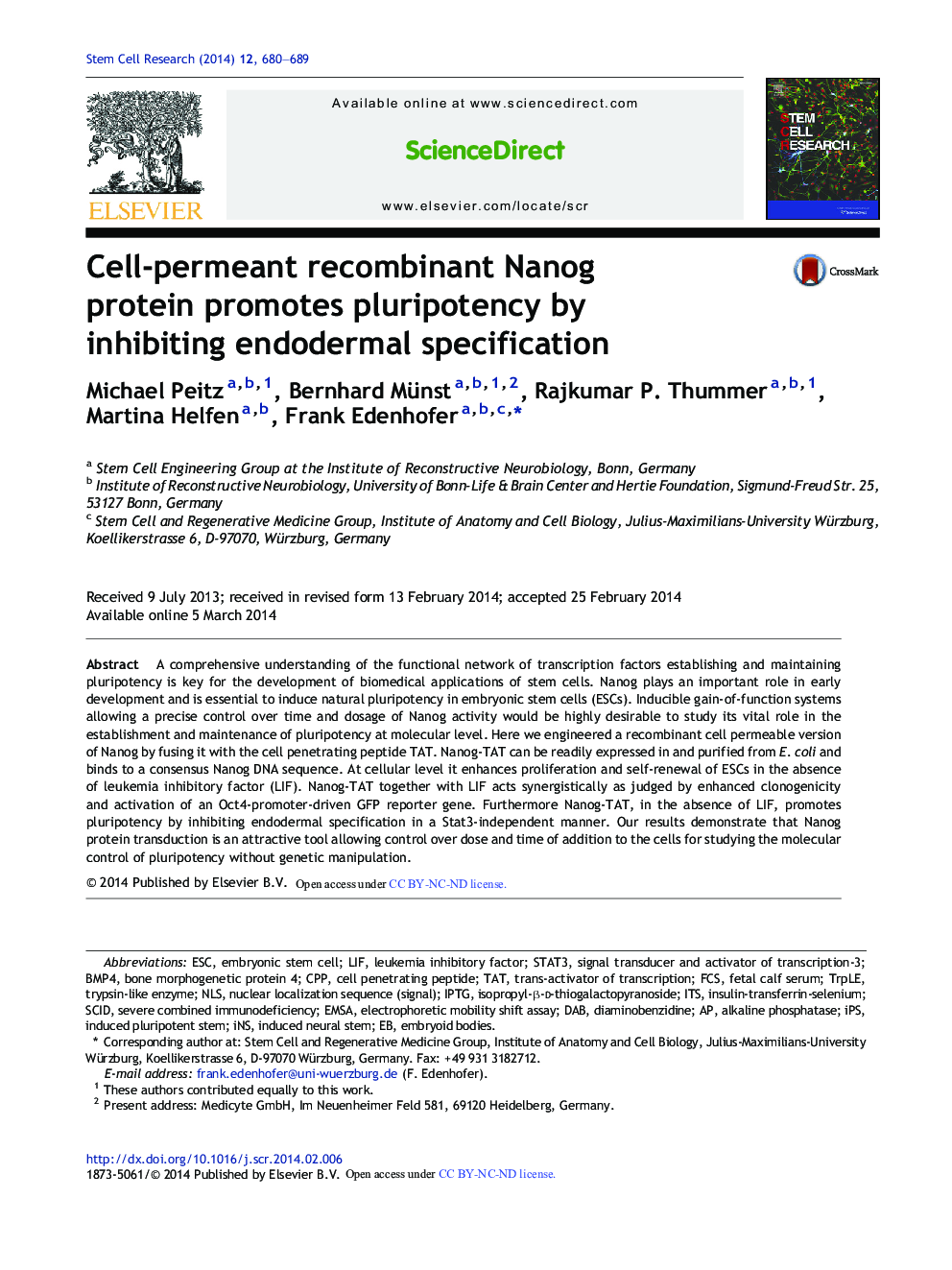| Article ID | Journal | Published Year | Pages | File Type |
|---|---|---|---|---|
| 2094530 | Stem Cell Research | 2014 | 10 Pages |
•Generation of biologically active cell-permeant recombinant Nanog protein•Cell-permeant Nanog expressed in and purified from E.coli•Cell-permeant Nanog enhances proliferation and self-renewal of mouse ESCs.•Nanog suppresses endoderm differentiation in a Stat3-independent manner.•Nanog protein transduction enables transgene-free gain-of-function.
A comprehensive understanding of the functional network of transcription factors establishing and maintaining pluripotency is key for the development of biomedical applications of stem cells. Nanog plays an important role in early development and is essential to induce natural pluripotency in embryonic stem cells (ESCs). Inducible gain-of-function systems allowing a precise control over time and dosage of Nanog activity would be highly desirable to study its vital role in the establishment and maintenance of pluripotency at molecular level. Here we engineered a recombinant cell permeable version of Nanog by fusing it with the cell penetrating peptide TAT. Nanog-TAT can be readily expressed in and purified from E. coli and binds to a consensus Nanog DNA sequence. At cellular level it enhances proliferation and self-renewal of ESCs in the absence of leukemia inhibitory factor (LIF). Nanog-TAT together with LIF acts synergistically as judged by enhanced clonogenicity and activation of an Oct4-promoter-driven GFP reporter gene. Furthermore Nanog-TAT, in the absence of LIF, promotes pluripotency by inhibiting endodermal specification in a Stat3-independent manner. Our results demonstrate that Nanog protein transduction is an attractive tool allowing control over dose and time of addition to the cells for studying the molecular control of pluripotency without genetic manipulation.
